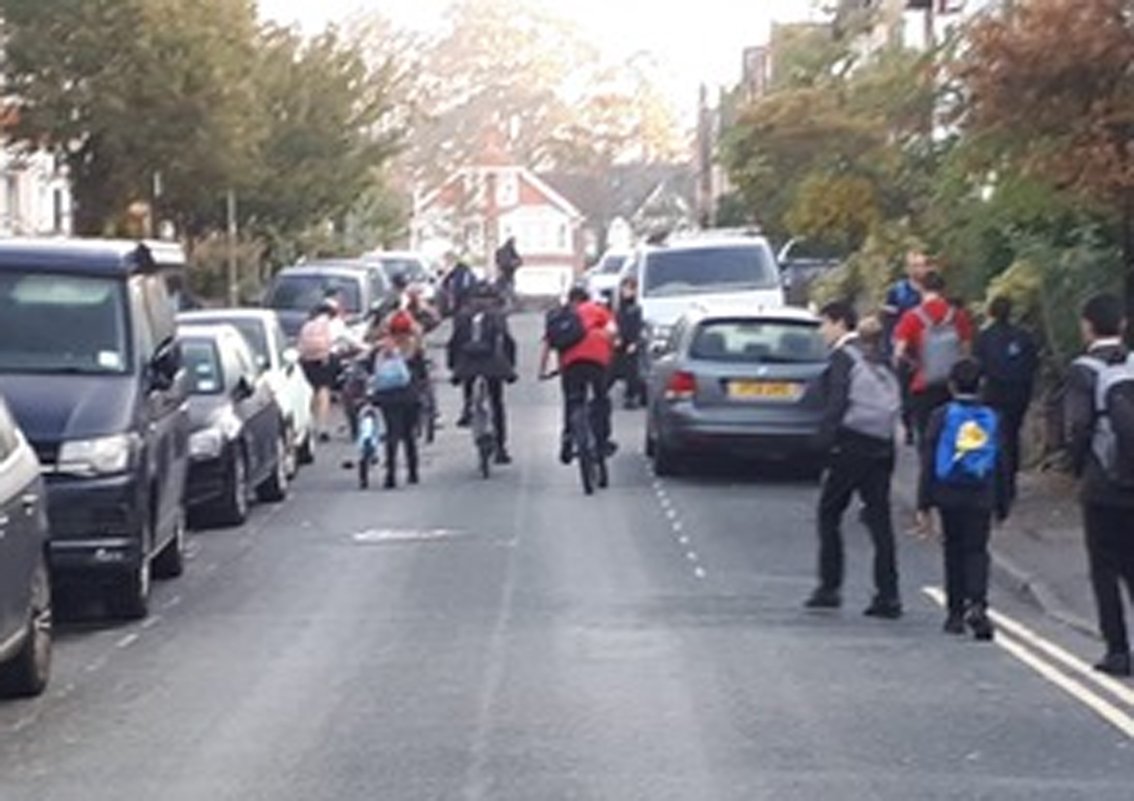LTNs keep our children safe

By Jemima Hunt
Jemima is Oxford City Councillor for the Labour Party, St Clements Ward
In Oxford playwright Karim Khan’s award-winning play, Brown Boys Swim, Kash and Mohsen, two local schoolboys, are waiting at the bus stop.
MOHSEN: They literally tore down the bollard.
KASH: Where’s that?
MOHSEN: By Cowley Road. Princes Street, and this cyclist comes up to them – ‘put that back’.
Cue laughter from a local audience familiar with Oxford’s bollards and how they became a national story. East Oxford’s Low Traffic Neighbourhoods (LTNs) were introduced in May 2022. For months the UK media seized upon stories of the plastic bollards proving a target for vandals and thieves. Coverage included a Panorama documentary, “Road Wars”, and an article in the The Times, “Low Traffic, Big Bust-Ups”. The plastic bollards were finally replaced with lockable wooden posts in March 2023.
Why do we have LTNs?
East Oxford’s LTNs were introduced as part of the government’s emergency active travel 2020 funding. According to the Department for Transport:
LTNs work by minimising through-traffic. A successful LTN makes walking and cycling more convenient than using a car for short trips.
Before they were rolled out by the County Council for an 18-month trial there was rigorous consultation on the LTN schemes. Residents were assured that the emergency services, key consultees, would be given keys to the lockable bollards.
The wooden bollards have transformed East Oxford. Every day streams of children cycle up and down Magdalen, Southfield and Divinity Roads to get to and from school. Prior to the LTNs, thousands of vehicles used Divinity Road, a residential road that narrows to a single lane at the top, as a cut-through. Children were driven to school because it was too dangerous to cycle.
Local reactions

“The reduction in traffic since our LTN went in has had a positive impact on Pegasus,” says Magdalen Road children’s theatre director, Georgia Bradley.
“At our busiest times we have seen a significant rise in audiences arriving either on foot or by bike, which is preferable to vehicles clogging up the road. It has led to a spike in families coming to the area to enjoy the local coffee shops and restaurants along with the theatre.”
Local mother of two, Emma was not a fan of ‘the concept of LTNs’. She changed her mind when the wooden bollards arrived. “I felt safe cycling with my children to school and nursery.” Her 5 year old daughter, who has since learned to cycle will, however, be put back in the car to get to school, a mile away, from January 2024.
The LTNs are weakened
On 17 October, Oxfordshire County Council’s Cabinet made the East Oxford LTNs permanent. But as part of alleviating the traffic congestion caused by the closure of Botley Road by Network Rail, residents have been told that the bollards on Magdalen and Divinity Roads and James Street will be removed.
“To remove the LTN’s wooden bollards and reopen Magdalen Road to traffic would pose a significant safety risk for children,” says Georgia Bradley.
For residents of Divinity Road, the County Council’s decision to reopen their road to emergency vehicles, taxis and a number of other exemptions brings back memories of 1985. In this year Divinity Road, like East Avenue and Union Street, had a gate installed half-way down to prevent rat-running. Unlike East Avenue and Union Street, Divinity Road’s gate lasted only 3 months.
According to cycling campaigner Dame Sarah Storey, “I don’t think I’ve ever visited a school where all the kids don’t put their hands up when I ask, ‘who would like to cycle to school?’ It’s down to us adults to enable this.”
Oxfordshire County Council has made a commitment to Vision Zero. Will it provide guidance for children who currently use East Oxford’s roads to cycle to school about what they should do until the bollards are replaced? Let’s hope so.
